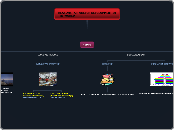Instructional Systems Design
All Good instructional design models start with learning, not technology. Page 4
Roots in behaviorism and systems thinking
All sound e-learning environments provide:
1. Interactivity and active learning opportunities
2. Feedback on progress, ideas, testing theories, etc.
3. Optimized environment (uses appropriate media characteristics)
4. Flexibility in teaching strategies for a variety of learning styles and needs.
5. Appropriate and necessary access to enabling and facilitating technologies.
Stages of Infusing Technology
05-Evolution
will try new tech. only if it facilitates learning
04-reorientation
new emphasis on teaching and learning - not technology
continues process of rethinking the environment
03-integration
2 parts
later stage - how the teacher actually thinks about hi/her classroom
early stage teachers use the new technology by choice
02-utilization
teachers actually try a new technology in their class
01-familiarization
very basic exposure to new technology
Dick & Carey Model (1990)
step-wise flow chart
6- Formative evaluation
summative evaluation is conducted
provides a basis for new versions
determines efficacy of materials
field test materials
revise if necessary
5- instructional methods and materials
done simutaneously
based on
assessments
objectives
learners
tasks
goals
4-performance objectives
assessment
behavior objectives
2 & 3 element
conducted same time
analysis of learners and characteristics
match tasks with learner skills
goals of instruction are identified
broken into several large asked
task analysis
1st element
needs assessment
nature of instruction
need for instruction exists?
Conditions-based Theory
1. Learning goals can be categorized as to learning outcomes or knowledge type
2. Learning outcomes can be represented in a predictable prerequisite relationship.
3. Acquisition of different outcome categories requires different internal processes
4. Different internal process are supported by identifiabley different instructional processes.
Gagne
internal condition
prerequisite knowledge
3-sequencing the component tasks to ensure optimal transfer to the final task.
2-ensuring that each component task is mastered
1-provide instruction on a set of component tasks that build towards a final task
Tools
Thinking
both teacher &students
cognitive strategies
metacognitive skills
conscious awareness of how one thinks and learns
recall new knowledge
learner to encode
students
external
instructional conditiions provided by teacher, materials, or other learners
facilates the internal conditions for learning
predicted success in class
internal
cognitive processes that support learning outcomes
amount and quality of knowledge
perceived self-efficacy
motivation to learn
Teachers
strategies and methods
appropriate for learning task
business
concern
contexts of learning
conditions
processes









